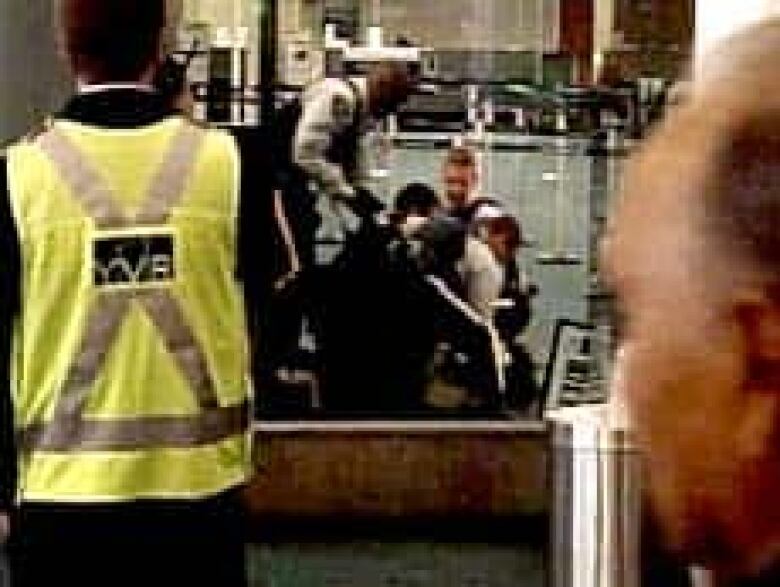Charge from energy weapon alone not deadly, Taser inquiry told
First phase of inquiry scheduled to run until May 23

A Taser gun doesn't routinely kill people, although the conducted energy weapon delivers electric current up to 85 times what's lethal, an American electrical engineer told a public inquiry in Vancouver Monday.
The Taser sends out a high jolt of electric current, but the charge from the weapon isn't deadly on its own because it's pulsed and not constant, said J. Patrick Reilly, the first person to testify at the two-phase inquiry prompted by the death of Polish immigrant Robert Dziekanski at the Vancouver airport last October.
The Taser is not a "benign device" but it has a "low, small probability" of causing injury or even death, said Reilly, a researcher at Johns Hopkins University in the U.S., who studied the Taser for the Department of Defense and the Department of Justice four years ago.
In a slideshow presentation, Reilly walked the inquiry commissioner, retired B.C. Appeal Court justice Thomas Braidwood, through a lesson in electricity, and explained why the Taser doesn't routinely kill people.

Reilly documented a variety of human and animal studies that demonstrated the Taser's effect on blood chemistry and respiration, but said he was unable to determine why some people die after being stunned.
"I concluded the use of Tasers was … there were hazards, but they were rare," Reilly testified.
"You could not rule out the possibility of affecting the heart and possibly even causing a fatal incident."
He told the inquiry what's needed is a central clearing house for police reports to keep track of fatal Taser incidents.
Lot to learn about Taser: commissioner
Braidwood opened Monday's proceeding by saying that there's still a lot to be learned about the Taser but he expects by the end of the inquiry to be able to conclude whether the shock weapons should continue to stay in the hands of B.C.'s police forces.

The first phase of the inquiry, which focuses on the medical and scientific aspects of the stun gun's use, is scheduled to run until May 23 and Braidwood has until the end of June to file a report. He's already asked for an extension to October, which has not yet been granted.
The second phase of the inquiry will focus on Dziekanski, who died in the arrivals lounge of Vancouver International Airport on Oct. 14, 2007, shortly after RCMP officers used a stun gun on him. But the second phase and a coroner's inquest into Dziekanski's death have been put on hold while B.C.'s Crown prosecutor makes a decision on possible criminal charges.
During his testimony, Reilly said studies commissioned by Taser International have pronounced the weapon as safe, but he pointed out that those studies avoided delivering the Taser's probes to the chest.
"If you were concerned about avoiding a heart incident, that would be one reason why you'd put the Taser darts on the back," he told the inquiry.

Reilly's findings came as no surprise to Walter Kosteckyj, the lawyer for Dziekanski's mother, Zophia Cisowski.
"As far as my client's concerned, if there was no Taser, there would be no death. Her son would still be walking around today," Kosteckyj said Monday.
Dziekanski, 41, died shortly after RCMP officers stunned him twice with a Taser.
Millions of people around the world watched a bystander's video on the internet showing the RCMP confrontation with Dziekanski, prompting a public outcry and more than 10 investigations across Canada into the use of Tasers by police.
The two-phase provincial inquiry may result in restrictions on the use of Tasers by municipal police forces, but not by the RCMP because the inquiry has no jurisdiction over the federally regulated RCMP.